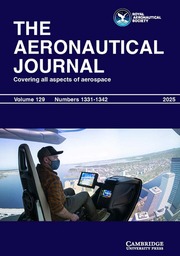No CrossRef data available.
Article contents
Experimental study of electrical arc phenomena in electrodes with pure and coated materials to be used in aerospace power connectors
Published online by Cambridge University Press: 08 September 2025
Abstract
Electrical contacts are critical components in all connector systems, as they enable the flow of electrical current. However, power contacts are increasingly subjected to various forms of degradation due to the high input power demands of modern electrical circuits. One of the primary causes of damage is the electrical arc, which can lead to erosion and oxidation of contact surfaces, ultimately resulting in electrical insulation failure. In industries such as aerospace, this type of failure can be mission-critical, especially in scenarios where in-orbit repair is not possible. Therefore, the design and choice of contact material must be carefully considered. Based on theoretical studies of arc-related phenomena, we conducted experimental tests focusing on the optimisation of hemispherical contact using samples made from various pure and coated materials. The contact surfaces in these tests were composed of high-conductivity base such as copper (Cu) and aluminum (Al), and were also coated with noble metals such as gold (Au) and silver (Ag). These materials are commonly used in sectors including aerospace, automotive and general industrial applications. To ensure a fair comparison, all contact samples were manipulated and tested under consistent conditions that reflect their real-world operational environments. The resulting arc parameters were identified and analysed through modeling to determine the most suitable contact design and material most capable of withstanding arc-related degradation over the mission duration, thus ensuring longer service life in applications were a continuous monitoring and repair are not feasible. The results show that repetitive exposure to high input power significantly damages contacts surfaces. Furthermore, the use of coated materials effectively extends the lifespan of the electrical contacts. Scanning electron microscope (SEM) and energy-dispersive X-ray spectroscopy (EDX) analyses support these findings, revealing that high-power input increases erosion rates and leaves pronounced marks on the contact surfaces.
Information
- Type
- Research Article
- Information
- Copyright
- © The Author(s), 2025. Published by Cambridge University Press on behalf of Royal Aeronautical Society


